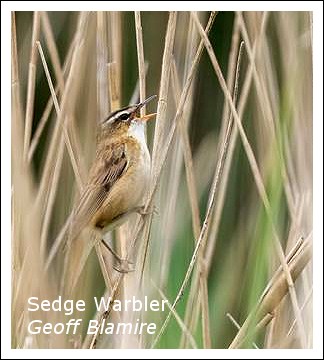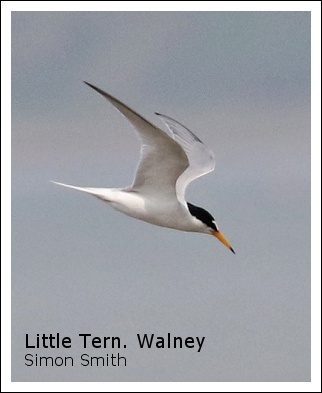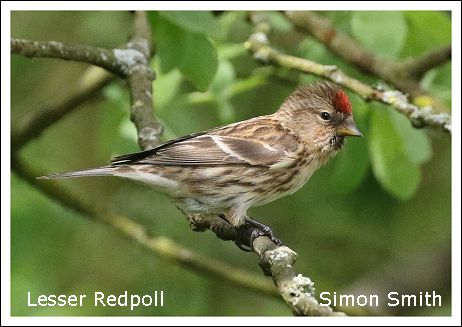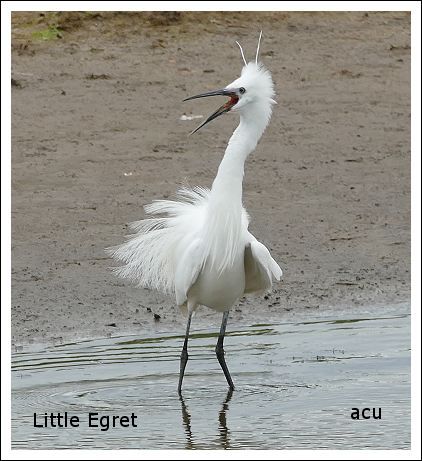
KOS Trip to Walney Island and Leighton Moss. 12th May 2024.
This was our first overnight trip since the covid pandemic put a stop to all our indoor and outdoor activities as a group. "Overnighters" allow us to visit more distant places than single day outings permit and to spend more time at those locations without the prospect of a long drive home at the end of the day. without the prospect of a long drive home at the end of the day.
The distance up to the Cumbria Wildlife Trust's South Walney Nature Reserve is 116 miles and took us 2¼ hours via the M6 and the A590; easy driving on a pleasant Sunday morning.
The lady volunteer on duty in the visitor cabin collected our
£3
entry fees, issued us with maps, answered our queries and pointed us towards the start of the three trails and the location of the all-important "facilities"!
On our way to the Sea Hide we stopped at two small pools, fringed by phragmites reeds from where the clamorous song of a well-hidden Sedge Warbler gave us the first entry on the trip list.
From the Sea Hide we began the long trek, along the red trail, as far as the lighthouse; sand dunes on one side, the sea on the other. Unfortunately the tide was out and, even with the aid of telescopes, birds on the beach were just specks in the distance; we did though manage to identify Sanderling, Ringed Plover, Dunlin and Turnstone.
Pausing at the Bay Hide we were intrigued by the appearance of a flock of nine Snow Geese flying overhead, they included one Blue-morph with a 10th, also blue-morph, remaining on the Island! Interestingly, yesterday, (14/5) a flock of 23 (including one blue-morph) were seen on Lordship Marsh, Frodsham.
The track back to the car park, whilst equally as long as the first leg of the trail, was much more enjoyable as the tide was  coming in and the birds we'd seen only at a distance were only a few yards from us. New species for the day were also recorded including Goldfinch and Greenfinch; three Little Terns and a male Red-breasted Merganser gave great views - the terns were a little further away so Simon did very well to get such a good shot of one of the birds. coming in and the birds we'd seen only at a distance were only a few yards from us. New species for the day were also recorded including Goldfinch and Greenfinch; three Little Terns and a male Red-breasted Merganser gave great views - the terns were a little further away so Simon did very well to get such a good shot of one of the birds.
On the way out of the reserve, at the Gate Pool, three new species were added to the list - Tufted Duck, a late staying male Wigeon and a drake Garganey concealed in the peripheral vegetation: not easy to see but with patience its characteristic head pattern showed well from time to time.
The second stop of the day was Foulney Island; just a short distance across the Piel Channel from Walney Island but a half hour drive through the centre of Barrow-in-Furness to get there by road. The plan was to walk from the car park down the length of the Foulney Embankment to the island but, unfortunately, the tide was now well and truly in and walking over the wet, slippery stones and shingle just wasn't feasible. Nevertheless good views again of the waders - Dunlin and Turnstones were possible and, in the distance, a flock of Brent Geese brought the total of species seen during the day to a respectable 47.
We stayed the night at the Barrow Premier Inn. Not on everybody's bucket list of course but you do know what you're going to get. The rooms were immaculate and the food, whilst not cordon bleu, was perfectly acceptable and for a grand total of
£76
, which included breakfast and a two course evening meal with a free drink. There were no complaints.
The following morning (Monday 13/5) we had intended to drive straight to Leighton Moss but decided, on the way, to visit the Cumbria Wildlife Trust's Foulshaw Moss Nature Reserve. This was a good decision, the reserve is a little gem! 350 hectares of reclaimed peat bog with easy to navigate boardwalks, excellent viewing platforms and nesting Ospreys as a bonus! Leighton Moss but decided, on the way, to visit the Cumbria Wildlife Trust's Foulshaw Moss Nature Reserve. This was a good decision, the reserve is a little gem! 350 hectares of reclaimed peat bog with easy to navigate boardwalks, excellent viewing platforms and nesting Ospreys as a bonus!
The volunteer on duty, a gentleman of a certain age, gave us a comprehensive introduction to the reserve with numerous digs at another well-known conservation group with vastly more members but fewer reserves: in a previous life he must have been a stand-up comedian!
Lesser Redpolls visited the feeders and Willow Warblers were singing everywhere, they were never out of earshot and outnumbered the local Chiffchaffs. A singing Tree Pipit gave good views through the 'scopes and we were able to add Osprey to our list, albeit via very distant views of the head of one of the birds low in the nest in the far distance. They do have a webcam which is steerable, although it seems to optical rather than mechanical.
This reserve is well worth a visit if you're ever in the area. You'll not regret it!
On then to Leighton Moss where, despite it being a Monday morning, we found the car park full to overflowing. So there were  lots of visitors but it's a big reserve and, as usual, there was plenty of room in the various hides. Following a coffee in the restaurant we set off around the reserve, starting at the sky tower. We'd only climbed a few steps when an Osprey appeared, circling and then hovering over the middle of the reserve but by the time we'd reached the top platform it was gliding slowly out of view. A good start though. Another big raptor - a male Marsh Harrier took its place, slowly quartering the phragmites reedbeds, below Mute Swans and Pochard were new species for the trip list. lots of visitors but it's a big reserve and, as usual, there was plenty of room in the various hides. Following a coffee in the restaurant we set off around the reserve, starting at the sky tower. We'd only climbed a few steps when an Osprey appeared, circling and then hovering over the middle of the reserve but by the time we'd reached the top platform it was gliding slowly out of view. A good start though. Another big raptor - a male Marsh Harrier took its place, slowly quartering the phragmites reedbeds, below Mute Swans and Pochard were new species for the trip list.
Moving on down to the Greisdale hide we could hear both Reed and Sedge Warblers and the booming call of a Bittern. From the hide, not just the sound of Bitterns but also good views of two birds in flight and, if that wasn't good enough, glimpses of the elusive Bearded Reedlings making their way through the reeds.
We decided to give the causeway hide a miss and make our way instead to the two coastal hides. I can report that the track to the car park hasn't improved and you still have drive down there very carefully. I managed it OK and the car's exhaust system remains intact but again we wondered why the RSPB haven't carried out repairs. Perhaps it belongs to the railway company and the responsibility lies with them but it certainly needs sorting.
We added seven new species from the Eric Morcambe hide; a large flock of Black-tailed Godwits in a confusion of plumages rested in the shallows, amongst them the 'scopes picked out six Bar-tailed Godwits. A few Avocets were nesting alongside the Black-headed Gulls on some of the islands. Encroaching Little Egrets were harried mercilessly by the Gulls, much to their annoyance.
The appearance of a marauding Peregrine Falcon caused mass panic but it seemed more intent on stealing prey from a Marsh Harrier than attacking any of the smaller birds. The final new bird for the trip was a Spoonbill on the far pool, it was species number 87, not bad going for a couple of days birding.
Species recorded during the trip to Cumbria and North Lancashire. 12th and 13th May 2024
The bulk of the records are from Walney on Sunday, I have then added new species that were subsequently seen at Foulney Island on the same day and those seen at Foulshaw Moss and Leighton Moss on Monday.
Walney Island
Wheatear, Blackbird, Lesser Black-backed Gull, Great Black-backed Gull, Herring Gull, Black-headed Gull, Skylark, Meadow Pipit, Swallow, Canada Goose, Greylag Goose, Lesser Snow Goose, House Sparrow, Sedge Warbler, Eider, Reed Bunting, Moorhen, Kestrel, Whitethroat, Oystercatcher, Linnet, Lapwing, Curlew, Cormorant, Carrion Crow, Sanderling, Ringed Plover, Dunlin, Shelduck, Mallard, Jackdaw, Turnstone, Greenfinch, Pied Wagtail, Red-breasted Merganser, Little Tern, Goldfinch, Sand Martin, Green Sandpiper, Sandwich Tern, Starling, Woodpigeon, Wigeon, Garganey, Tufted Duck, Grey Heron, Magpie, Gannet.
Foulney Island
Brent Goose.
Foulshaw Moss
Song Thrush, Great Tit, Blackcap, Lesser Redpoll, Pheasant, Chaffinch, Blue Tit, Willow Warbler, Chiffchaff, Tree Pipit, Tree Sparrow, Osprey.
Leighton Moss
Wren, Robin, Cetti's Warbler, Nuthatch, Dunnock, Cuckoo, Coal Tit, Swift, Pochard, Mute Swan, Reed Warbler, Marsh Harrier, Coot, Garden Warbler, Shoveler, Bittern, Bearded Tit, Gadwall, Buzzard.
Spoonbill, Avocet, Little Egret, Redshank, Peregrine, Black-tailed Godwit, Bar-tailed Godwit. = 87
|
|
|